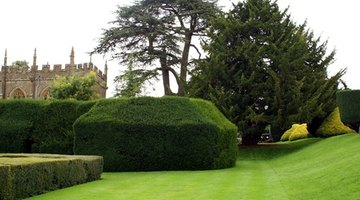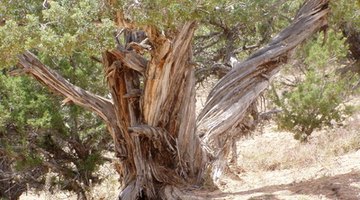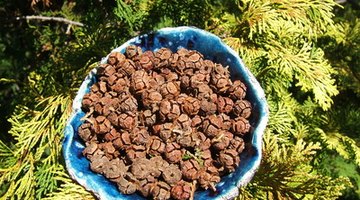White vs. Black Cedar Hedging
Cedar tree hedging is a beautiful way to landscape and keep your home and yard private. Two main types of cedar, black and white, are most often used for hedging. The differences in these two types of cedar, such as size and color, create two completely different landscape designs.

White Cedar Size

Under ideal circumstance, white cedar can grow as tall as 40 feet. The width of the branches of the white cedar require that the trees be spaced farther apart than black cedar. White cedar allows for a beautiful barrier but does not completely block out its surroundings.
Black Cedar Size

Black cedar usually grows to about 15 to 20 feet and is a thinner tree than white cedar, with less branch extension. Its smaller stature and width makes the black cedar an elegant hedging tree, guaranteeing the utmost privacy from the outside world.
Color Difference
White cedar is a slightly lighter green than black cedar's darker and denser shade of emerald green. The bark of the black cedar is a dark red-brown, whereas the white cedar's bark is a lighter shade of brown. The color variation is overall negligible, so choice simply depends on which cedar works best with your desired landscaping goals.
The Drip Cap
- Cedar tree hedging is a beautiful way to landscape and keep your home and yard private.
- The differences in these two types of cedar, such as size and color, create two completely different landscape designs.
- Under ideal circumstance, white cedar can grow as tall as 40 feet.
References
Writer Bio
Based in Los Angeles, Kelly Lynn Marie has been a freelance writer since 2003. She holds a Bachelor of Science degree in theatre and a Master of Arts degree in writing from Northern Michigan University. She has been published in "Lake Superior Magazine" and won a playwriting competition in 2010 in Los Angeles.
Photo Credits
- yew hedge outside a church image by L. Shat from Fotolia.com
- yew hedge outside a church image by L. Shat from Fotolia.com
- ancient cedar tree image by PHOTOFLY from Fotolia.com
- pinecones from a cedar tree image by Carol Wingert from Fotolia.com
More Articles



